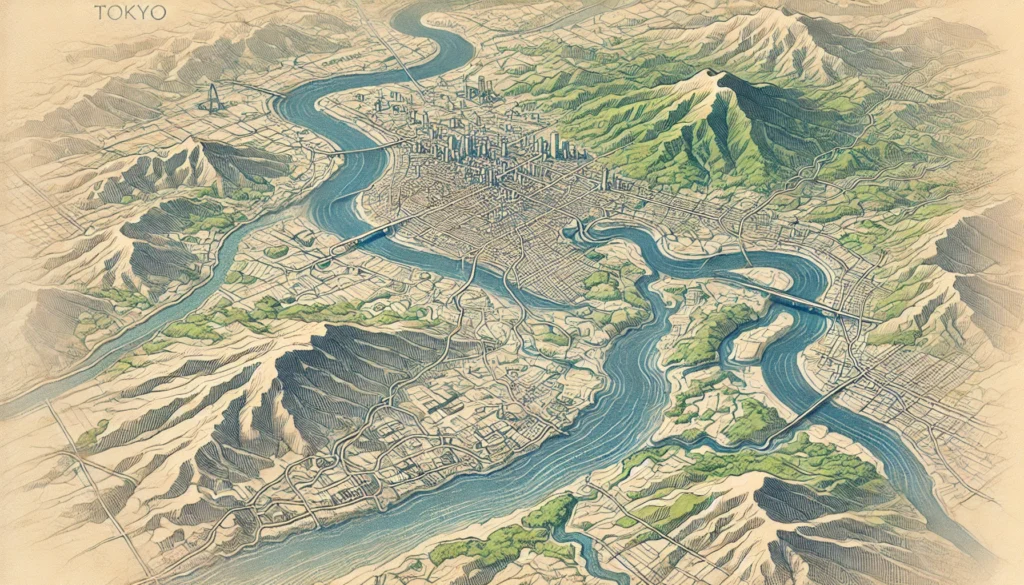Ever wondered why Tokyo feels both expansive and compact at the same time? The unique Tokyo altitude profile plays a significant role in shaping Japan’s capital city, influencing everything from its climate and development patterns to transportation networks and even the daily lives of its residents.
While cities like Denver or Mexico City might be known for their high elevations, Tokyo altitude features tell a different story—one of subtle variation and strategic adaptation to the natural landscape. Understanding these elevation patterns provides fascinating insights into how this megacity has evolved and continues to thrive.
Want to explore Japan’s culture?
Discover Japan’s rich culture, traditions, and hidden gems with our expertly crafted guides. Get insider tips on travel, food, and history. All for free!
The Surprising Truth About Tokyo Altitude
When visitors first arrive in Tokyo, many are surprised to learn about the Tokyo altitude statistics. The average Tokyo altitude is approximately 40 meters (131 feet) above sea level—a relatively modest elevation compared to many major global cities. However, this average figure masks a more complex topographical reality.
The Tokyo altitude range varies significantly across the metropolis:
- The lowest points in eastern Tokyo near Tokyo Bay sit almost at sea level
- The western districts and surrounding areas gradually rise into the foothills
- The highest populated areas in western Tokyo reach elevations of over 200 meters (656 feet)
This variation creates a gentle eastward slope from the western Tama region toward Tokyo Bay, influencing everything from water drainage systems to urban development patterns.
Tokyo Altitude vs. Other Global Cities
When comparing Tokyo altitude with other major cities around the world, Tokyo sits at a relatively low elevation:
| City | Average Altitude (meters) |
|---|---|
| Tokyo | 40 |
| New York | 10 |
| London | 35 |
| Paris | 35 |
| Mexico City | 2,240 |
| Denver | 1,609 |
Unlike high-altitude cities that face challenges with thin air and extreme weather, Tokyo’s modest elevation contributes to its humid subtropical climate and relatively moderate temperature fluctuations.
How Tokyo Altitude Shapes the City’s Geography
The Tokyo altitude profile has played a crucial role in defining the city’s development over centuries:
Eastern Tokyo: The Lowlands
The eastern districts of Tokyo, including many of the 23 Special Wards, feature a Tokyo altitude that rarely exceeds 10-20 meters above sea level. These lowland areas, historically known as “shitamachi” (下町, literally “low city”), have traditionally been:
- More prone to flooding
- Home to mercantile and working-class neighborhoods
- Characterized by dense, grid-like urban planning
- Built on reclaimed land near Tokyo Bay
This lower Tokyo altitude zone includes famous areas like Asakusa, Nihonbashi, and the artificial island developments in Tokyo Bay.
Western Tokyo: The Uplands
As you move westward, the Tokyo altitude gradually increases. The western portions of Tokyo, traditionally known as “yamanote” (山の手, literally “mountain hand”), feature:
- Elevations of 50-200 meters
- Historically prestigious residential neighborhoods
- More hills and natural topographical features
- Cooler temperatures during summer months
Areas like Setagaya, Suginami, and parts of Shibuya sit at higher elevations, offering subtle climate advantages that have made them desirable residential districts throughout Tokyo’s history.
The Impact of Tokyo Altitude on Daily Life
The varying Tokyo altitude across the metropolis influences residents’ lives in several subtle but important ways:
Climate Variations
Even small differences in Tokyo altitude can affect local climate:
- Higher elevation western areas can be 1-2°C cooler in summer
- Eastern low-lying areas experience higher humidity
- The Tokyo altitude gradient creates natural air circulation patterns
As we’ve noted in our article on Mount Fuji Entrance Fee, Japan’s geography creates microclimates that can vary significantly even within short distances.
Transportation Design
The Tokyo altitude variations have shaped the city’s transportation infrastructure:
- Subway lines must navigate different elevation levels
- Bicycle-friendly routes consider the subtle hills and inclines
- Drainage systems account for the natural eastward water flow
Disaster Preparedness
The Tokyo altitude profile plays a critical role in the city’s approach to natural disasters:
- Flood control systems redirect water from higher to lower elevations
- Tsunami risk is greater in lower-lying eastern districts
- Landslide risk assessment considers elevation changes
Love Japan? Stay in the Loop!
Get the best of Japan straight to your inbox: language, culture & travel insights!
Hidden High Points: Discovering Tokyo’s Altitude Landmarks
While the average Tokyo altitude is modest, several notable high points exist throughout the metropolitan area:
Mount Takao
Located in western Tokyo, Mount Takao reaches 599 meters (1,965 feet) and offers:
- Hiking trails with spectacular views of the city
- Religious sites with historical significance
- A cooler microclimate during summer months
Tokyo Skytree
As an artificial high point, Tokyo Skytree stands at 634 meters (2,080 feet), creating a modern Tokyo altitude landmark that:
- Provides panoramic views of the elevation patterns below
- Serves as a broadcasting tower visible from most of the city
- Has become an orientation point for visitors and residents alike
The Okutama Region
The mountainous Okutama area in far western Tokyo features several peaks over 1,000 meters, demonstrating the extreme range of Tokyo altitude within the prefecture’s boundaries.
Planning Your Visit: Tokyo Altitude Considerations
If you’re planning to explore Tokyo with elevation in mind, consider these tips:
- Weather preparation: Even small Tokyo altitude differences can mean varying temperatures across the city
- Transportation planning: Consider elevation changes when planning walking routes
- Photography opportunities: Higher points offer spectacular city views
- Seasonal timing: Higher elevation areas cool faster in autumn
Similar to the infrastructure insights we shared in Japan’s World-Class Infrastructure, understanding Tokyo’s vertical geography can enhance your appreciation of the city’s design.
Q&A: Common Questions About Tokyo Altitude
Q: What is the average altitude of Tokyo? A: The average altitude of Tokyo is approximately 40 meters (131 feet) above sea level.
Q: Does Tokyo have any mountains within the city limits? A: Yes, western Tokyo includes several mountains, with Mount Takao (599 meters) being the most famous and accessible.
Q: How does Tokyo’s altitude compare to New York City? A: Tokyo’s average altitude (40 meters) is higher than New York City’s average altitude (10 meters), though both are considered low-elevation coastal cities.
Q: Does Tokyo’s altitude affect the climate? A: Yes, the variation in Tokyo’s altitude creates subtle climate differences, with higher western areas generally experiencing slightly cooler temperatures than lower eastern districts.
Q: Are there any altitude-related health concerns for visitors to Tokyo? A: Unlike high-altitude cities, Tokyo’s modest elevation doesn’t cause altitude sickness or related health concerns for visitors.
Want to learn more about Tokyo’s fascinating geography and how to navigate this complex city? Check out our comprehensive Tokyo travel guides with detailed maps highlighting elevation changes and recommended routes.
Understanding the Tokyo altitude profile adds another dimension to appreciating this remarkable city—where subtle elevation changes have shaped centuries of urban development and continue to influence the metropolis today.
Join Fellow Japan Enthousiasts!
Ask questions, get study tips, and take part in weekly challenges. Join a community of motivated learners exploring both the language and culture of Japan!




